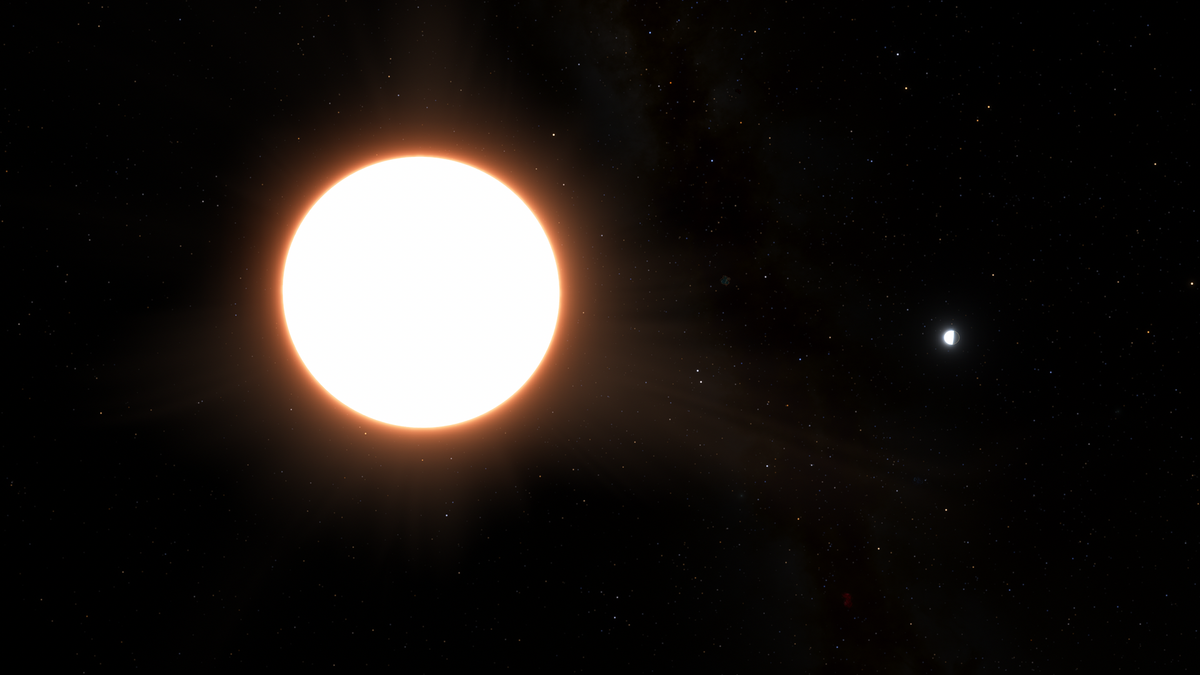Science
Related: About this forumMetal clouds turn scorching hot exoplanet into the universe's largest mirror
By Robert Lea published about 9 hours ago
"It's a planet that shouldn't exist."

An illustration of the exoplanet LTT9779b as it orbits its star (Image credit: Ricardo Ramírez Reyes (Universidad de Chile))
Astronomers have discovered the most reflective planet outside the solar system ever seen. The ultra-hot extrasolar planet, or exoplanet, acts like a cosmic mirror because it is covered by reflective clouds of metal.
The planet, designated LTT9779 b, is located around 264 light-years from Earth and reflects around 80% of the light that shines on it from its parent star. As a comparison to LTT9779 b, Earth reflects just 30% of the light that falls on it from the sun. The ultra-hot LTT9779 b is so reflective that it is the first exoplanet found that gives the solar system's shiniest planet, Venus, a run for its money; Venus has a thick layer of clouds that reflect around 75% of incident sunlight.
While LTT9779 b was first discovered by NASA's Transiting Exoplanet Survey Satellite (TESS) mission in 2020, the world's highly reflective nature wasn't uncovered untn
The exoplanet is, in turn, almost five times as wide as Earth, meaning it is also the largest cosmic mirror ever discovered. "Imagine a burning world, close to its star, with heavy clouds of metals floating aloft, raining down titanium droplets," research co-author and Diego Portales University astronomer James Jenkins said in a statement.
More:
https://www.space.com/exoplanet-largest-mirror-metal-clouds?utm_source=notification
JoeOtterbein
(7,863 posts)...Another WOW moment for me!
eppur_se_muova
(40,865 posts)Astronomers use "metal" in an odd sense -- only implying the presence of metallic elements, but not necessarily in their elemental, i.e. metallic, form, which is how others use the term.
Most of the compounds used in the model described in the original pub'n would be rocks at normal temps.
https://www.aanda.org/articles/aa/full_html/2023/07/aa46117-23/aa46117-23.html
The Ti=O bond is one of the strongest in the Universe; IR bands due to TiO show up in stars at higher temps than any other molecular absorption band.
TiO2 is familiar as "titanium white" pigment in paints, and yes it is *highly* reflective as a solid, but absorbs IR in the vapor phase.